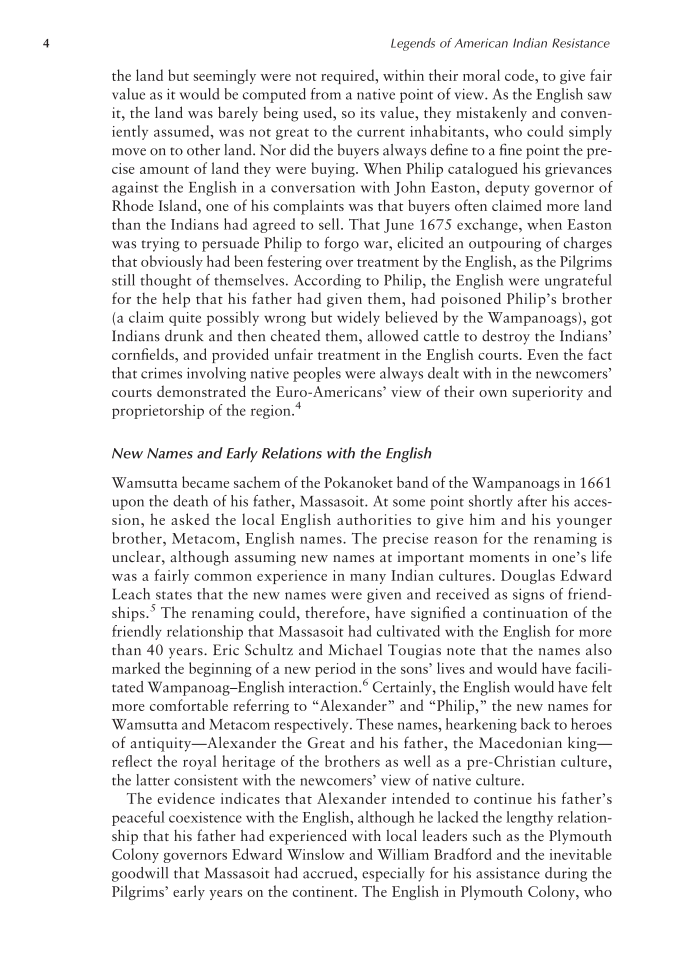the land but seemingly were not required, within their moral code, to give fair value as it would be computed from a native point of view. As the English saw it, the land was barely being used, so its value, they mistakenly and conven- iently assumed, was not great to the current inhabitants, who could simply move on to other land. Nor did the buyers always define to a fine point the pre- cise amount of land they were buying. When Philip catalogued his grievances against the English in a conversation with John Easton, deputy governor of Rhode Island, one of his complaints was that buyers often claimed more land than the Indians had agreed to sell. That June 1675 exchange, when Easton was trying to persuade Philip to forgo war, elicited an outpouring of charges that obviously had been festering over treatment by the English, as the Pilgrims still thought of themselves. According to Philip, the English were ungrateful for the help that his father had given them, had poisoned Philip’s brother (a claim quite possibly wrong but widely believed by the Wampanoags), got Indians drunk and then cheated them, allowed cattle to destroy the Indians’ cornfields, and provided unfair treatment in the English courts. Even the fact that crimes involving native peoples were always dealt with in the newcomers’ courts demonstrated the Euro-Americans’ view of their own superiority and proprietorship of the region.4 New Names and Early Relations with the English Wamsutta became sachem of the Pokanoket band of the Wampanoags in 1661 upon the death of his father, Massasoit. At some point shortly after his acces- sion, he asked the local English authorities to give him and his younger brother, Metacom, English names. The precise reason for the renaming is unclear, although assuming new names at important moments in one’s life was a fairly common experience in many Indian cultures. Douglas Edward Leach states that the new names were given and received as signs of friend- ships.5 The renaming could, therefore, have signified a continuation of the friendly relationship that Massasoit had cultivated with the English for more than 40 years. Eric Schultz and Michael Tougias note that the names also marked the beginning of a new period in the sons’ lives and would have facili- tated Wampanoag–English interaction.6 Certainly, the English would have felt more comfortable referring to “Alexander” and “Philip,” the new names for Wamsutta and Metacom respectively. These names, hearkening back to heroes of antiquity—Alexander the Great and his father, the Macedonian king— reflect the royal heritage of the brothers as well as a pre-Christian culture, the latter consistent with the newcomers’ view of native culture. The evidence indicates that Alexander intended to continue his father’s peaceful coexistence with the English, although he lacked the lengthy relation- ship that his father had experienced with local leaders such as the Plymouth Colony governors Edward Winslow and William Bradford and the inevitable goodwill that Massasoit had accrued, especially for his assistance during the Pilgrims’ early years on the continent. The English in Plymouth Colony, who 4 Legends of American Indian Resistance
Document Details My Account Print multiple pages
Print
You have printed 0 times in the last 24 hours.
Your print count will reset on at .
You may print 0 more time(s) before then.
You may print a maximum of 0 pages at a time.










































































































































































































































































































































































